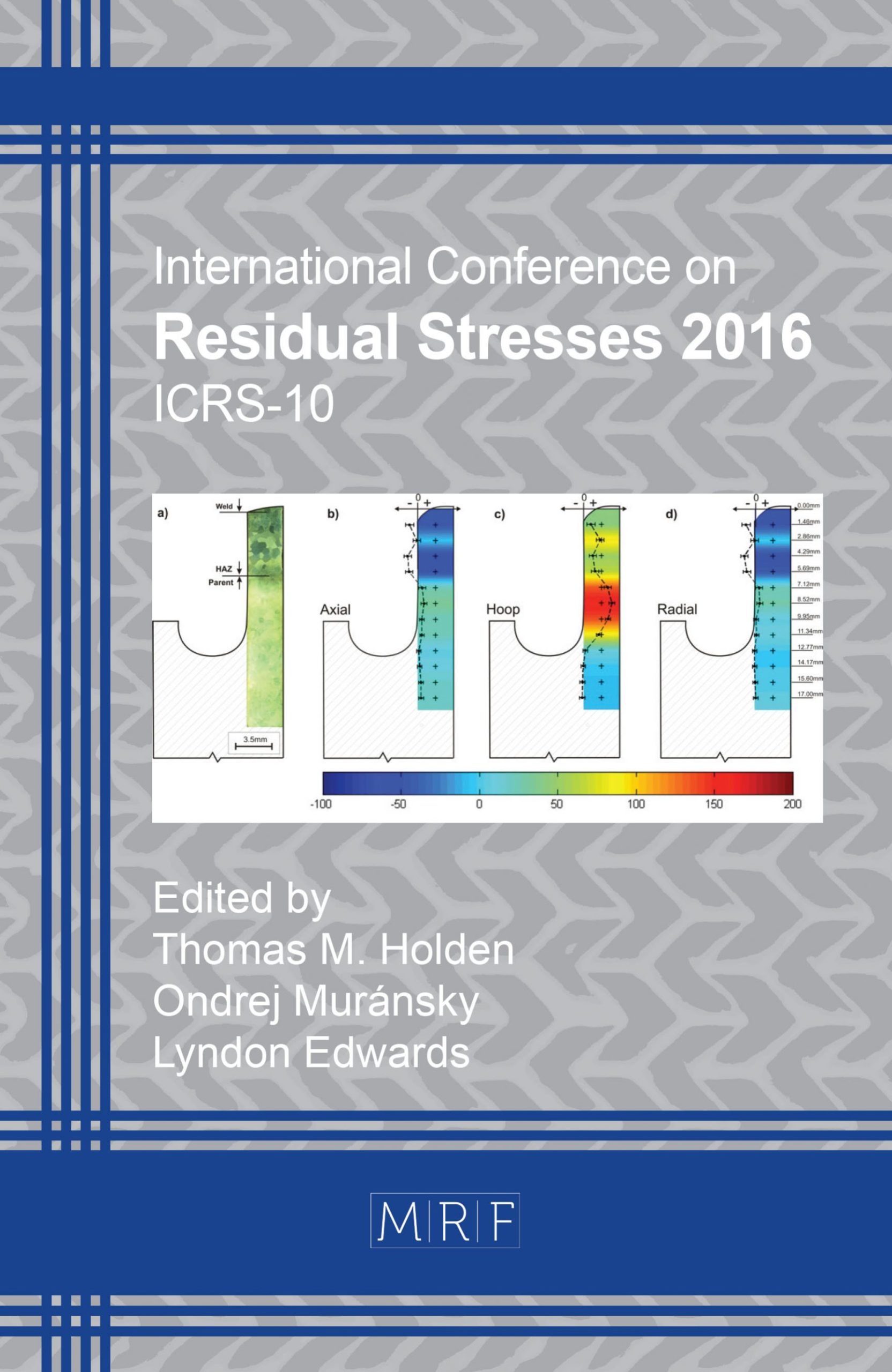Residual Stresses in Selective Laser Melted Components of Different Geometries
M. Reid, T. Sercombe, A. Paradowska, X. Li
download PDFAbstract. As an emerging Additive Manufacturing (AM) technique, Selective Laser Melting (SLM) has found a promising application in biomedical field due to its advantages in fabricating Ti-6Al-4V components with specific and customised geometries. It has been reported that accumulated residual stress as a result of the high heating and cooling rates during SLM and the topological design of the components can largely influence the mechanical and functional properties of the fabricated components. In this study three notched samples were produced by SLM manufacturing. The samples were built using the same laser melting conditions on the same base size. The notches ranged in angle from 60° to 120°. Residual stresses in the three notched samples were analysed using the state-of-the-art neutron residual strain measurement instrument, Kowari, at the Australian Nuclear Science and Technology Organisation. A combination of gauge volumes were utilised to obtain high precision measurements at the notch tips and general measurements around the tips. This paper reports on the manufacture and measurement of differing residual stresses in the three SLM fabricated notches.
Keywords
Residual Stress, Neutron Scattering, Selective Laser Melting, Titanium
Published online 12/22/2016, 6 pages
Copyright © 2016 by the author(s)
Published under license by Materials Research Forum LLC., Millersville PA, USA
Citation: M. Reid, T. Sercombe, A. Paradowska, X. Li, ‘Residual Stresses in Selective Laser Melted Components of Different Geometries’, Materials Research Proceedings, Vol. 2, pp 383-388, 2017
DOI: http://dx.doi.org/10.21741/9781945291173-65
The article was published as article 65 of the book Residual Stresses 2016
![]() Content from this work may be used under the terms of the Creative Commons Attribution 3.0 licence. Any further distribution of this work must maintain attribution to the author(s) and the title of the work, journal citation and DOI.
Content from this work may be used under the terms of the Creative Commons Attribution 3.0 licence. Any further distribution of this work must maintain attribution to the author(s) and the title of the work, journal citation and DOI.
References
[1] S.M. Giannitelli, D. Accoto, M. Trombetta, A. Rainer, Acta Biomaterialia 10 (2014) 580-594. http://dx.doi.org/10.1016/j.actbio.2013.10.024
[2] B. Vrancken, L. Thijs, J.P. Kruth, J. Van Humbeeck, Acta Materialia 68 (2014) 150-158. http://dx.doi.org/10.1016/j.actamat.2014.01.018
[3] X.P. Li, C.W. Kang, H. Huang, T.B. Sercombe, Materials & Design 63 (2014) 407-411. http://dx.doi.org/10.1016/j.matdes.2014.06.022
[4] X.P. Li, M. Roberts, Y.J. Liu, C.W. Kang, H. Huang, T.B. Sercombe, Materials & Design.
[5] X.P. Li, X.J. Wang, M. Saunders, A. Suvorova, L.C. Zhang, Y.J. Liu, M.H. Fang, Z.H. Huang, T.B. Sercombe, Acta Materialia 95 (2015) 74-82. http://dx.doi.org/10.1016/j.actamat.2015.05.017
[6] O. Kirstein,V. Luzin, Materials Australia, 41 (2008) 52-54.
[7] A. Allen, M.T. Hutchings, C.G. Windsor, C. Andreani, Adv. Phys. 34 (1985) 445-473. http://dx.doi.org/10.1080/00018738500101791
[8] M.T. Hutchings and A.D. Krawitz; NATO ASI Series 216E, Kluwer Academic Publishers, Dordrecht / Boston / London (1992).
[9] H.J Prask, P.C Brand, Neutrons in Research and Industry, Proc. of Int. Conf. on Neutrons in Research and Industry, ed: G. Vourvopoulos, SPIE Proceedings Series, 2867 (1997) 106-115. http://dx.doi.org/10.1117/12.267879
[10] X.P. Li, C. Kong, T. Becker, T. Sercombe, Adv. Eng. Mater (2016)































